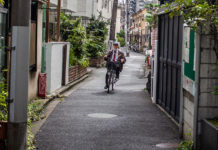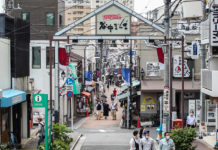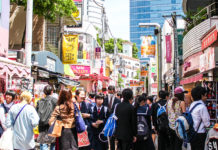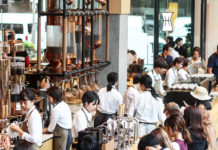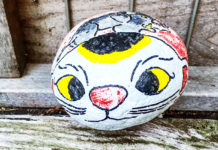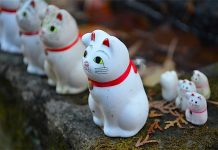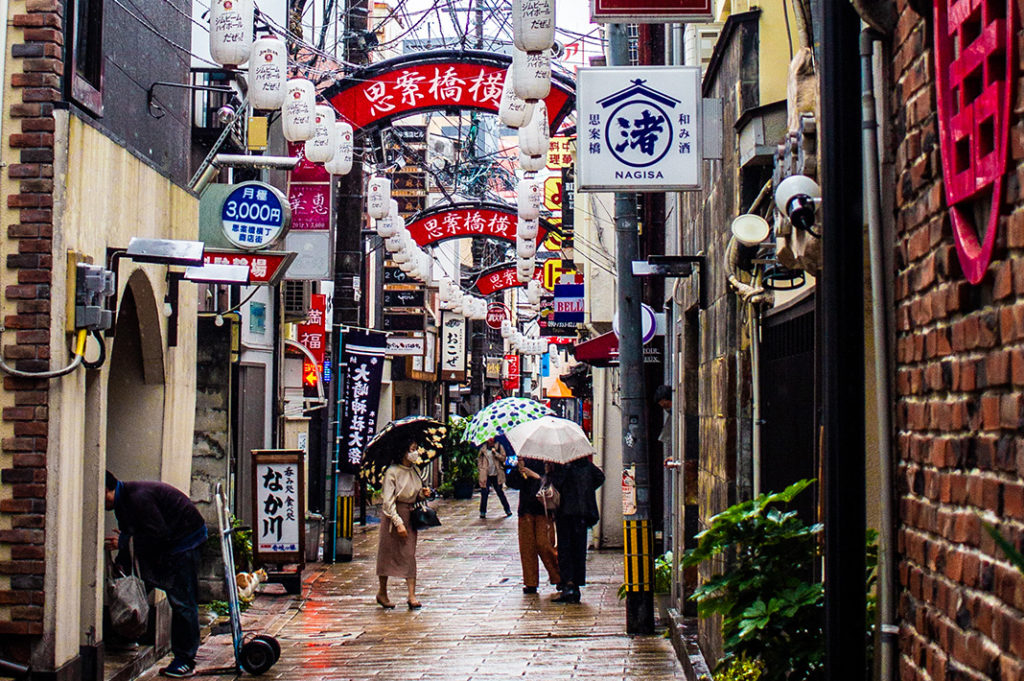
I first stepped into Shianbashi, Nagasaki’s best nightlife area, around lunchtime. It was predictably quiet, with most places shuttered up after a long night’s trade. I would witness the infamous evening atmosphere a bit later on, but first, I was looking to connect with the area’s history. With some guiding literature about Shianbashi and the neighbouring Doza in hand, I wandered along in search of traces of yesteryear.
Layers of history
As this part of Nagasaki once bordered the sea, it was home to all manner of traders, shipwrights and craftsmen. In the 1600s, a red light district opened in the south-east of the area. Though hundreds of years have passed, remnants of this time can still be seen. At a fork in the road by the entrance to Yanagi Kouji street, a weeping willow tree and a piece of stone bridge railing stand hidden in plain sight. It’s said that men leaving the red light district would stand on the bridge, by this tree, looking wistfully back toward their female companions. As such, the tree became known as “Mikaeri Yanagi” (looking back willow). At this time, though, there is no bridge, and I was the one looking around thoughtfully.
Tiny backstreets
As it looked the most interesting, I veered down Yanagikouji-dori. Only later did I realise literature referred to it as the “deep zone” of the area. I passed countless tiny restaurants and snack bars until eventually emerging from the maze on the border of Doza, a physical and thematic continuation of Shianbashi. From where I stood, the Doza entrance sign hung overhead, the design a nod to the area’s nautical roots.
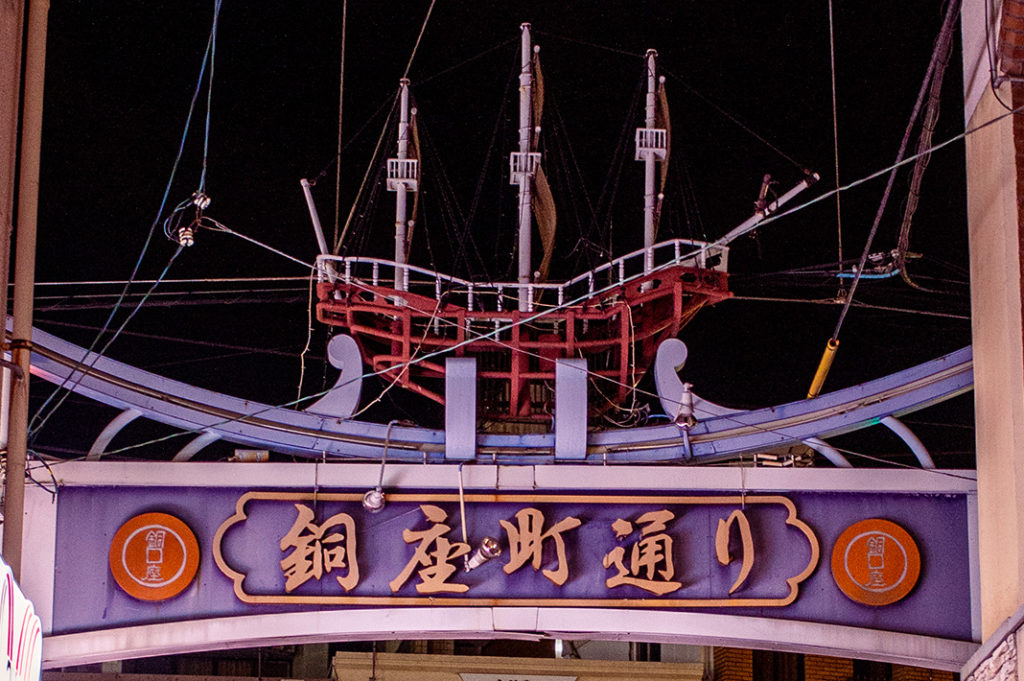
I was interested to read that Dozamachi was home to Japan’s first female doctor of Western medicine, Kusumoto Ine (1827-1903) and also became a popular spot for playhouses and later cabaret lounges in the Showa Era (1926-1989). In fact, in 1969, one of the local performing bands, The Cool Five, made it big with their song “It rained again in Nagasaki today” (長崎は今日も雨だった). Ahead, I saw proof of this era in the form of retro signage adorning the side of Hanbey restaurant, a popular Showa-era themed chain.
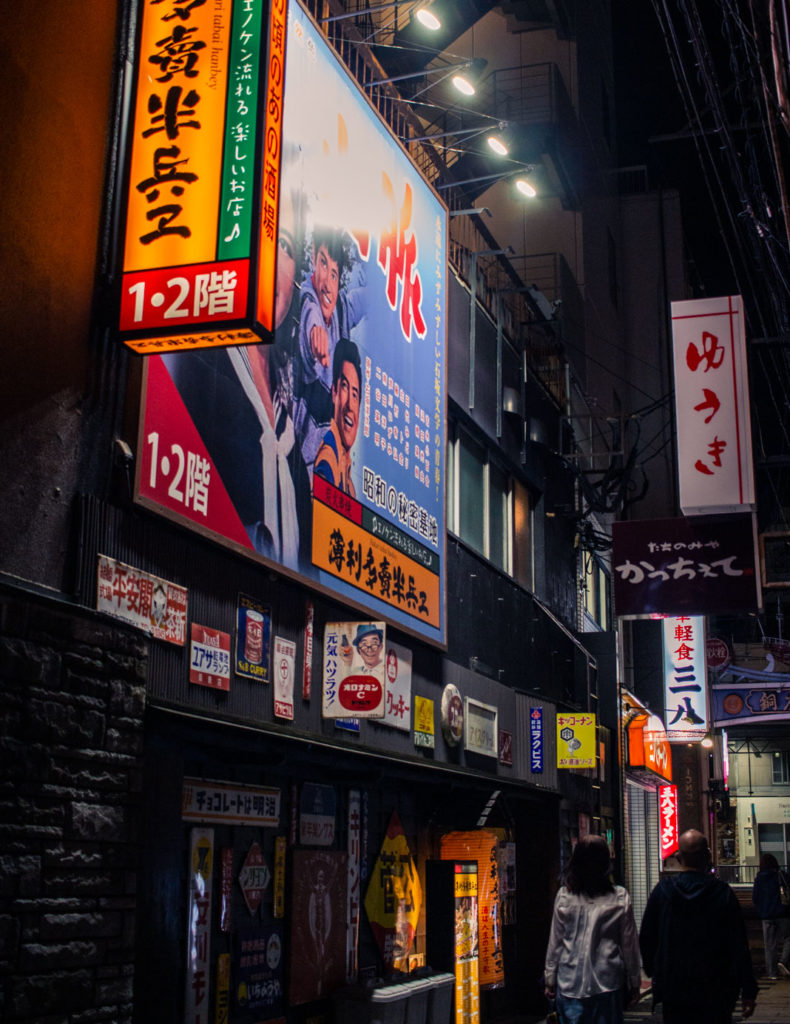
I would walk past these signs multiple times in search of my elusive next stop. Eventually, I asked for directions from who I thought was a local. The kindly contractor was stumped but called the owner of the restaurant he was working on for help. With many thank yous dispensed, I approached the building that housed Doza Inari rooftop Shrine.
Doza Inari Shrine: Secret Rooftop Shrine
Japan has shrines and temples seemingly on every corner. But, rooftop shrines? That’s taking the act of prayer to a whole new level. As the story goes, the Doza Inari Shrine was built in honour of the fox god (Oinari) who supposedly protected the area from fire and local soldiers from demise in the Russo-Japanese War. It’s a place to pray for good luck, either from the street or up top. We recommend the climb if you can!
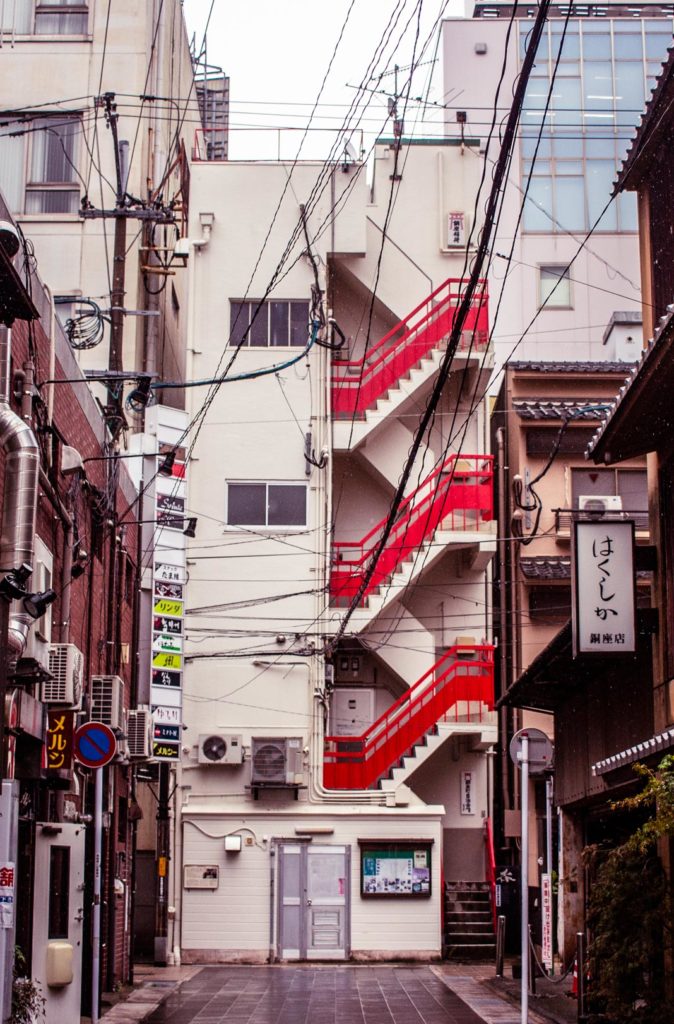
Head to the red staircase where you’ll see small signs displaying a red torii gate icon. Open the small gate and climb to the rooftop where you can enjoy the fantastic city views.
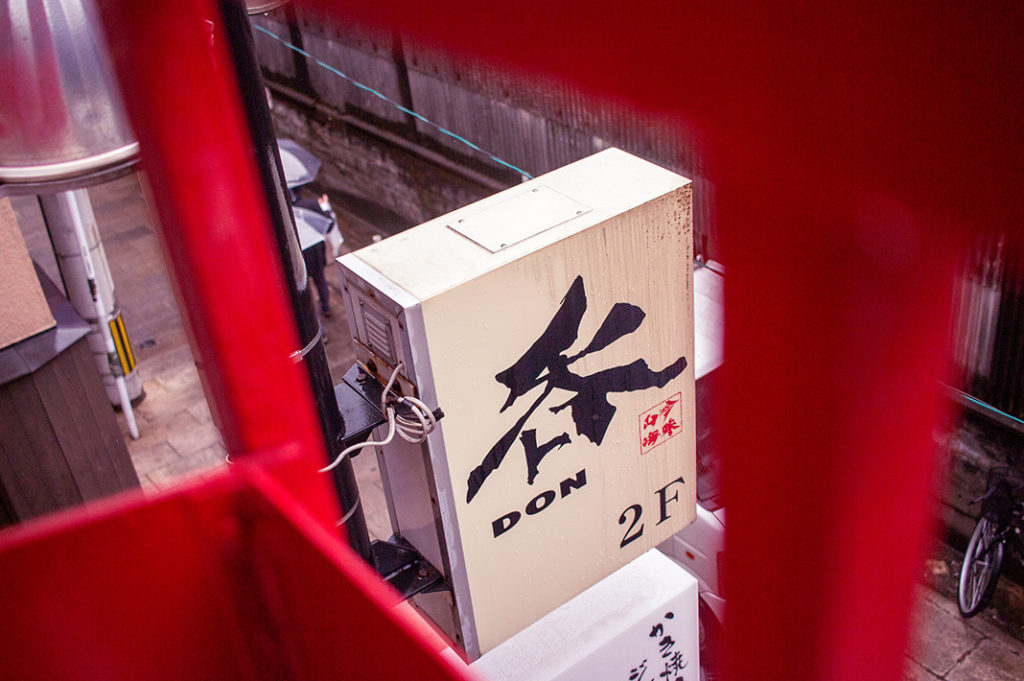
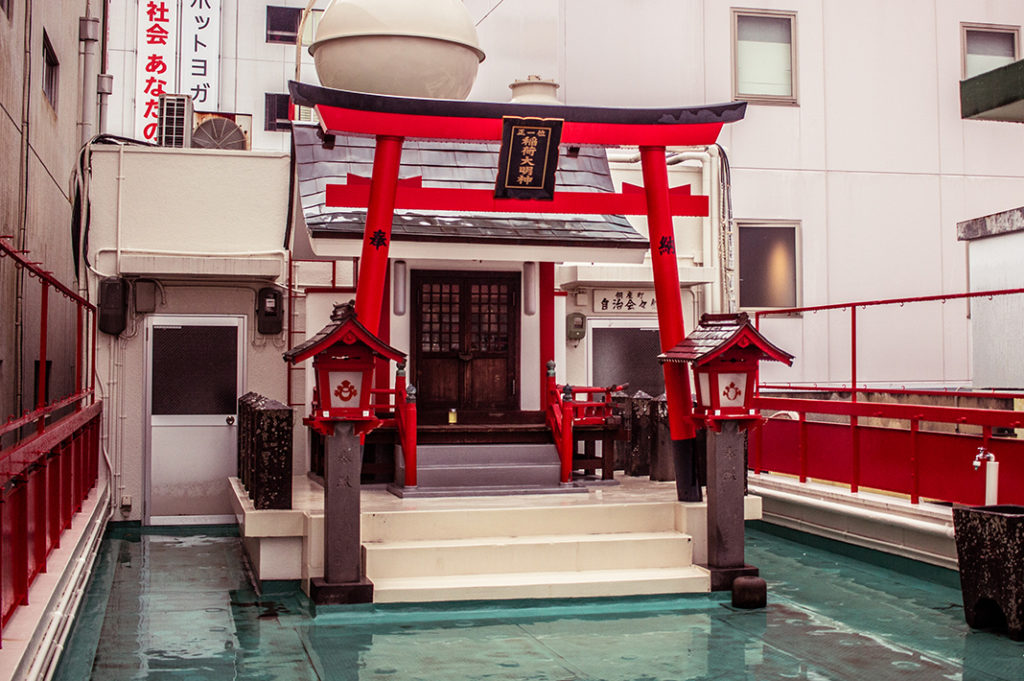
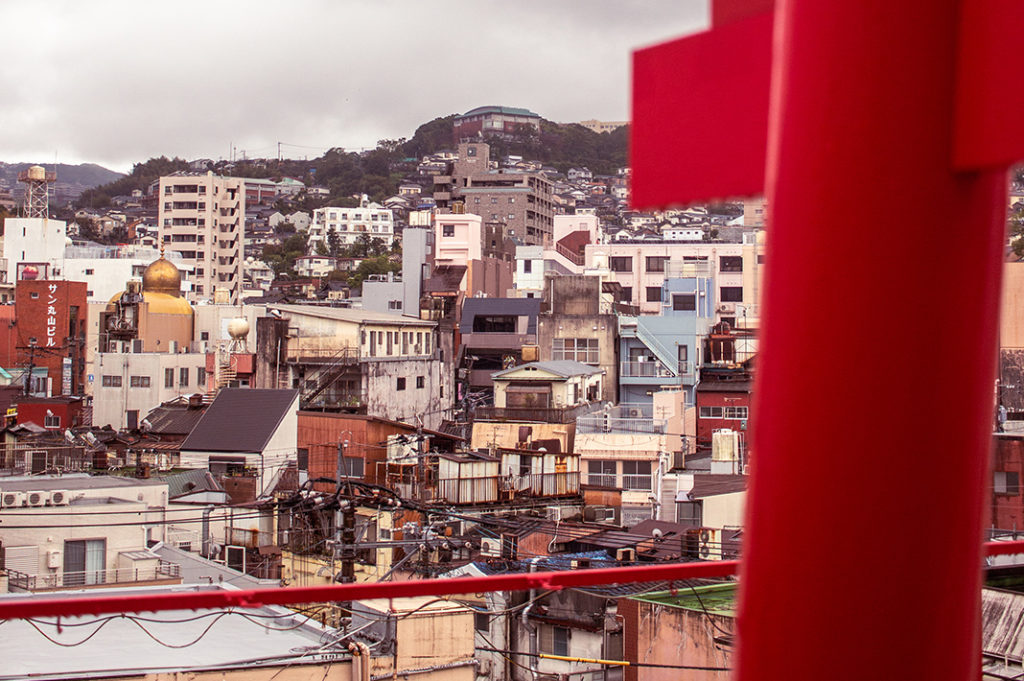
After taking in my surroundings, I wandered along Shianbashi Yokocho which runs parallel to the main road. As everything was still closed, I made a note to return in the evening to see the modern-day entertainment that takes place in Doza and Shianbashi.
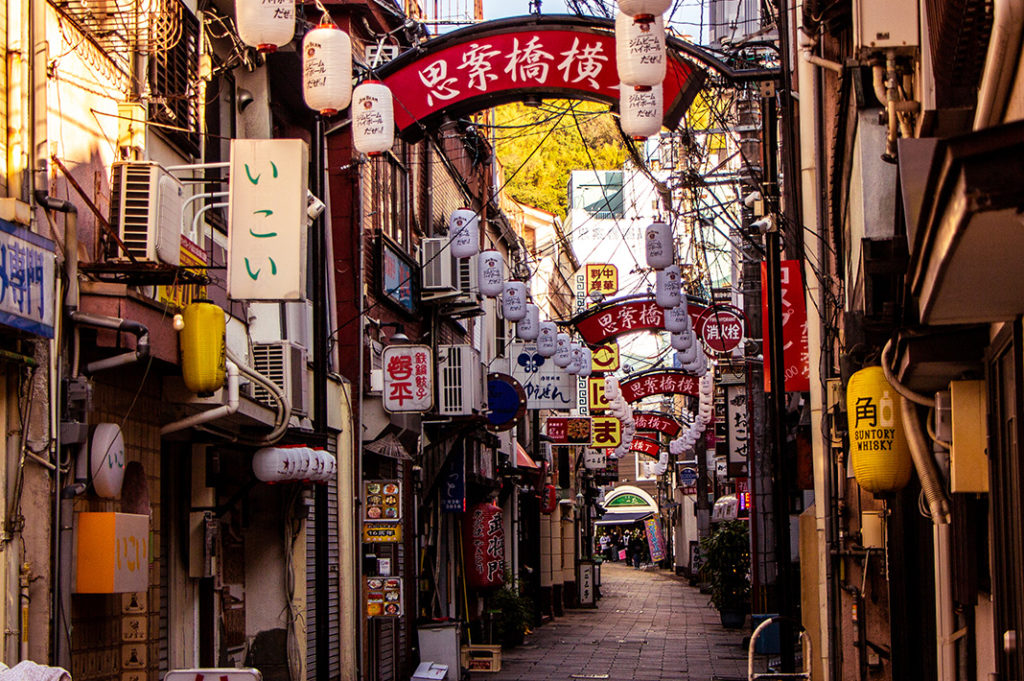
Nagasaki’s nightlife district
I returned at night and retraced my steps, once again getting lost in the maze of restaurants and snack bars. This time, the place was alive. A band played behind one door, jazz floated down from a 2nd-floor wine bar and groups of men wandered around with their ties loosened and cheeks red.
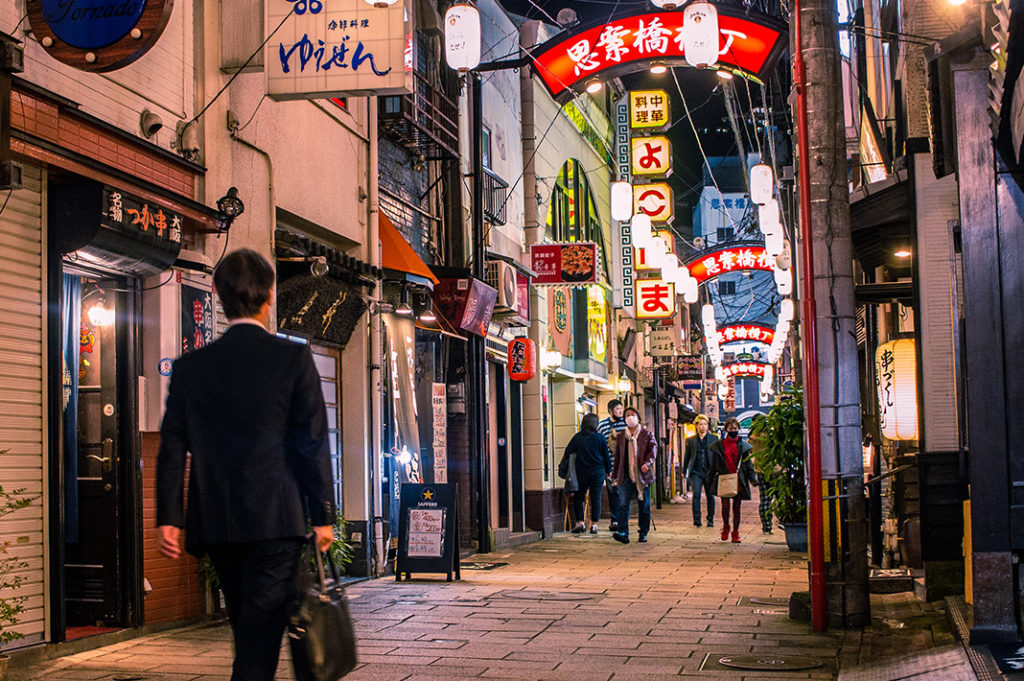
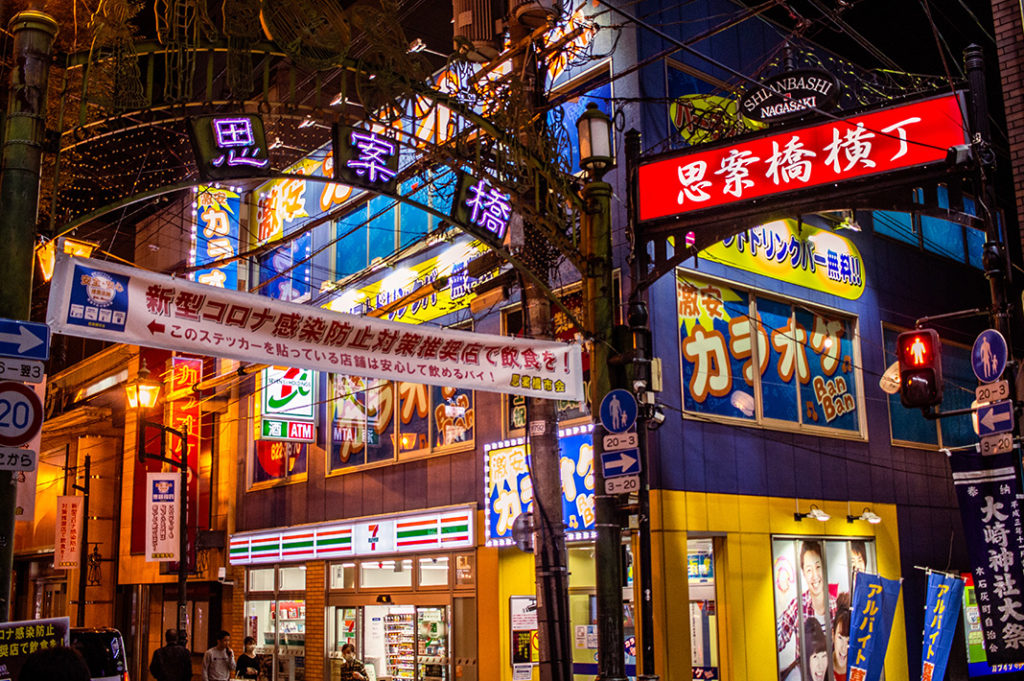
Standing at the end of Shianbashi Yokocho, I noticed a narrow alley beside it. Feeling brave, I ventured over and stepped into a gritty, dystopian Blade Runner scene. It was lined with air conditioner units, drink crates and motorbikes belonging to the kitchen staff who chopped noisily behind the countless back doors. One door, though, appeared to be an entrance—half-sized in an Alice in Wonderland kind of way—to a secret bar.

As I continued along, I heard karaoke emanating from indoors, even over the hum of the air conditioners on which alley cats slept. The eerie voyeuristic feeling had me on edge, and I got a fright whenever one of the cats skittered at my approach. At the end of the alley, I joined back up to the main drag and followed my nose along, thinking about the possibility of a second dinner.
Shianbashi: where the locals dine
This area is home to just about every kind of restaurant, cocktail bar, izakaya and snack bar you could imagine. It is a go-to for locals and is affectionately referred to as “gurume dori” or Gourmet Street. You’re apt to come across Chinese restaurants serving Nagasaki favourites like Sara Udon, braised pork belly or Champon. There’s also Italian, ramen, oden (a la carte items simmered in broth), Nagasaki beef, dumplings and seafood. So much seafood. Try ordering something like suzuki (sea bass), fugu (pufferfish) or the fancy okoze (stonefish).
A few of the maps I looked at didn’t elaborate much on the trappings of this area. Perhaps the gritty, red light, yokocho energy isn’t for everyone. However, if you’re looking to see where the locals wine and dine, you can’t beat Doza and Shianbashi.
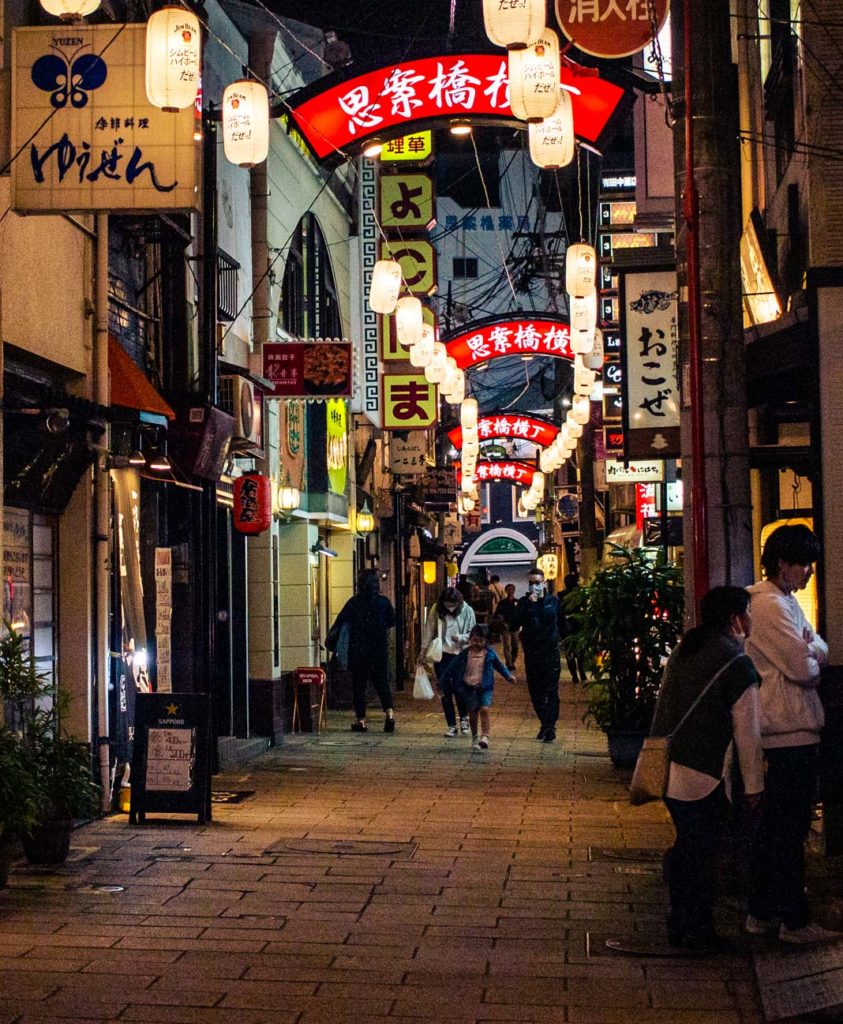
Where are Doza and Shianbashi?
Lucky for you, Nagasaki’s best nightlife area is conveniently located. Dozamachi is located just above Shinshi Chinatown, and Shianbashi is located to the right of Doza. You can access this area from the north by taking tram lines #1 or #4 to either Kankodori or Shianbashi. Or, enter Doza from the side by taking trams #1, #2 or #5 to Shinchi Chinatown or Nishi-Hamanomachi. Read more about Nagasaki’s trams here.

Follow this map as a starting point to your adventure in Nagasaki’s best nightlife area.
And if you’re in need of a bed, the wonderfully glitzy Candeo hotel is located in Doza and makes for a great place to stay in Nagasaki.
Post by Japan Journeys.





